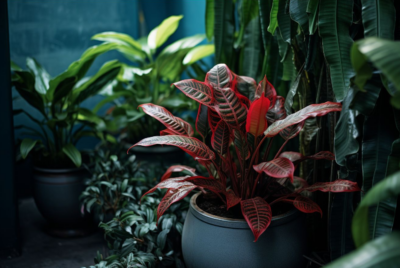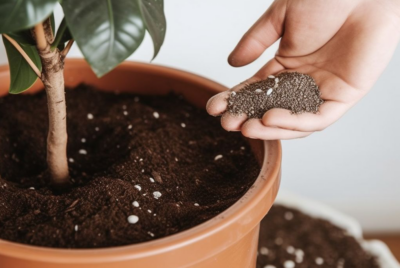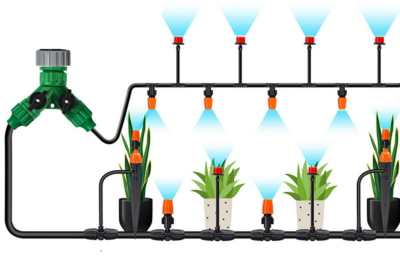Indoor Gardening Tower: Stylish and Functional Ideas
Introduction
Indoor gardening is a passion I’ve pursued for years, so I’m excited to share some stylish and functional indoor gardening tower ideas. In this article, I’ll guide you through tower gardening, offering tips, design inspirations, and practical advice for creating your indoor oasis. Whether you have extensive experience or not, the following concepts will assist you in building a stylish gardening tower.
Why Choose an Indoor Gardening Tower?
Before diving into the design ideas, let’s explore why indoor gardening towers are a fantastic choice for plant enthusiasts.
Maximizing Space and Aesthetics
Indoor gardening towers allow you to make the most of your space while adding an aesthetic touch to your home decor. In today’s urban environments, space is often limited. Additionally, towers provide a vertical solution, making the most of your available floor space. They can fit snugly into corners, along walls, or as room dividers.
But the benefits don’t stop at space-saving. These towers provide an optimal environment for plants to thrive. Since all the plants are neatly arranged, monitoring and caring for each one is more manageable. Watering, fertilizing, or checking for pests becomes more streamlined. Plus, the tiered design ensures that light distribution is more even, especially if you’re using grow lights. Each plant receives adequate light, promoting healthier growth.
Lastly, from an aesthetic viewpoint, these towers are undeniably modern and stylish. They turn your collection of plants into a living piece of art, creating a visual centerpiece in any room. If you’re looking to elevate your indoor gardening game, these towers are the way to go.
Year-Round Gardening
With a well-designed indoor tower, you can grow your favorite plants year-round, regardless of the weather outside. This is particularly beneficial for those who live in regions with harsh winters or extreme climates. The controlled indoor environment ensures a stable temperature and light conditions, giving your plants the consistency they need to thrive.
Easy Maintenance
These towers are designed for easy maintenance, making gardening accessible to everyone, even those with busy lifestyles. Many indoor gardening systems come with automated watering and lighting options, reducing the need for constant attention. The vertical layout can make it easier to reach your plants for pruning, harvesting, and general care.
Essential Elements of an Indoor Gardening Tower
You must consider several key elements to create a successful indoor garden tower.
Structure of an Indoor Gardening Tower
Choose or build a sturdy tower structure that suits your space and style preferences. Tower structures range from simple DIY wooden frames to sleek, modern metal structures. Also, the choice of materials and design should complement your interior decor. Ensure the system is stable and capable of supporting the weight of the plants and any additional equipment, such as grow lights.
When selecting materials for your tower, consider longevity and durability. For instance, while wood exudes a warm, rustic charm, it might require additional treatments to prevent rot or insect infestation. On the other hand, metal structures, particularly those made of stainless steel or aluminum, are sturdy and resistant to many common issues that wood faces. Still, they might lack the organic feel some gardeners prefer.
Remember, the choice you make will not only support your plants but also become a prominent feature in your living space. It’s essential to strike a balance between function and design. Also, factor in the ease of assembly. While some tower structures have convenient snap-together features, others may require a more hands-on assembly approach. No matter your route, your primary goal is to ensure a healthy and thriving environment for your plants.
Plastic towers are a popular choice for many indoor gardeners, and for good reason. Plastic, as a material, offers incredible durability. Unlike wood, which may rot over time, or metals that could corrode, high-quality plastic towers can withstand moisture and humidity, two constant companions of indoor gardening, for years without significant wear and tear.
Finally, investing time and thought into your tower’s structure will pay dividends in the long run in terms of plant health and the visual appeal of your indoor space.
Lighting
Sunlight is the lifeblood of plants, providing the necessary energy for photosynthesis and growth. However, indoor environments often lack consistent and adequate natural light, making it challenging to meet the demands of certain plants. This is where the significance of grow lights comes into play.
Select appropriate grow lights to ensure your plants receive the right light for healthy growth. Different plants have varying light requirements, so it’s essential to research the specific needs of the plants you intend to grow. LED grow lights are popular due to their energy efficiency and ability to provide a spectrum of light that closely mimics natural sunlight.
Plant Selection
Pick plants that thrive indoors, considering factors like light requirements and space constraints. Some excellent indoor gardening tower ideas include using herbs, succulents, leafy greens, and small fruiting plants like cherry tomatoes. Consider creating themed towers, such as a culinary tower filled with herbs or a tropical tower featuring exotic foliage.
Here’s a short list of suitable plants for an indoor gardening tower:
- Basil: A popular culinary herb with a distinct aroma, perfect for dishes like pesto and salads.
- Snake Plant: A low-maintenance plant known for its tall, upright leaves, it’s also an excellent air purifier.
- Pothos: A trailing plant with heart-shaped leaves that’s easy to care for and can tolerate low light conditions.
- Kale: is a nutrient-dense, leafy green vegetable that can thrive in cooler indoor temperatures.
- Aloe Vera: Known for its succulent leaves and healing gel inside, it’s an excellent plant for beginners.
- Mint: An aromatic herb that proliferates and is ideal for culinary uses such as teas and garnishing.
- Peace Lily: A flowering plant that’s not only beautiful but also acts as an air purifier.
- Cherry Tomatoes: A fruiting plant that can produce small, sweet tomatoes when given enough light.
- Spider Plant: An attractive plant with long, arching leaves that produce baby plantlets. It’s also known for purifying the air.
- Lettuce: Various types can be grown, providing fresh leaves for salads and sandwiches.
Remember, each plant has specific care requirements, so constantly research their needs when incorporating them into your indoor garden tower.
Watering System
Implement a suitable watering system to keep your plants adequately hydrated. You can choose various irrigation methods depending on your preference and the tower size. Self-watering systems, drip irrigation, or a simple hand-watering routine can all work well. Ensure that the watering system distributes moisture evenly to all tower levels.
In recent years, technological advances have significantly improved the efficiency and effectiveness of self-watering systems. These innovations use sensors to detect soil moisture levels, ensuring that plants receive water precisely when needed. Not only does this reduce water waste, but it also promotes healthier root growth by preventing overwatering.
Stylish Ideas for an Indoor Gardening Tower
Now, let’s explore some stylish indoor gardening tower ideas that can transform any room into a green paradise.
1. The Minimalist Tower
Embrace simplicity with a sleek, minimalist tower with a clean design, white pots, and various trailing greenery. This style suits modern and contemporary interiors, adding a touch of nature without overwhelming the space.
2. Herb Haven
Create a dedicated herb tower in your kitchen, providing fresh ingredients for your culinary adventures. A kitchen herb tower is functional and aesthetically pleasing, adding a burst of greenery to your cooking space.
3. Vertical Succulent Garden
Succulents are perfect for tower gardens, offering unique shapes and colors that add a modern touch to your space. Plant various succulent species in your tower for a visually striking and low-maintenance garden.
4. Tropical Oasis
Transport yourself to a tropical paradise by designing a tower filled with lush ferns, palms, and vibrant tropical flowers. This style creates a rich, exotic home atmosphere reminiscent of a lush rainforest.
5. Artistic Display
Turn your tower into a living work of art by arranging your plants in a visually captivating pattern or shape. This idea lets you showcase your creativity and design flair while incorporating plants into your decor.
6. Zen
Opt for a Zen garden-inspired tower with bamboo plants, moss, and miniature sculptures for a calming atmosphere. This style promotes relaxation and mindfulness, making it ideal for creating a tranquil corner in your home.
Maintaining Your Indoor Gardening Tower
Now that you’ve chosen a stylish indoor gardening tower design, knowing how to maintain it for long-term success is essential.
1. Regular Pruning
Keep your tower looking its best by regularly pruning and trimming your plants. Overgrowth can lead to overcrowding and reduced airflow, potentially causing issues with pests or disease.
Pruning is not just about controlling size; it’s an essential practice to stimulate new growth and enhance the overall health of your plants. Removing dead or yellowing leaves allows the plant to direct its energy towards producing fresh foliage and blooms. Furthermore, well-pruned plants have better access to light, ensuring each leaf can photosynthesize efficiently. Regular pruning also allows you to inspect your plants closely, helping you detect any early signs of issues needing attention.
2. Pest Control
Stay vigilant against indoor pests and take prompt action if you spot any unwanted visitors. Insects like aphids or spider mites can harm your plants, so monitoring your tower regularly is crucial.
A viable method for addressing these pests is to employ organic insecticides, notably neem oil or insecticidal soap. These treatments focus on eliminating the pests without exposing your plants to hazardous chemicals. Moreover, introducing allies like ladybugs can serve as natural defenders, effectively controlling aphid numbers.
3. Fertilizing
Feed your plants with appropriate fertilizers to ensure healthy growth. Indoor plants often need additional nutrients, which can deplete the soil over time. Choose a balanced, water-soluble fertilizer and follow the recommended dosage.
Conclusion
Indoor gardening towers offer a unique and stylish way to bring nature into your home. With the right design and maintenance, you can create a stunning indoor garden that enhances your living space and brings you joy and tranquility. Explore different styles, experiment with plant selections, and enjoy the process of nurturing your green oasis.
Frequently Asked Questions (FAQs)
- Can I use any plant in an indoor gardening tower?
While many plants can thrive in indoor towers, choosing varieties that suit your home’s available light and space is essential. Consider the specific needs of each plant before planting. - What type of lighting is best for indoor gardening towers?
LED grow lights are often the preferred choice, as they provide the necessary light spectrum for plant growth. However, the intensity and duration of light should match your plants’ requirements. - How often should I water my indoor garden tower?
The watering frequency varies depending on the plants and environmental conditions, but it’s crucial to monitor the moisture levels regularly. Stick your finger into the soil; if it feels dry an inch below the surface, it’s time to water. - Can I place an indoor gardening tower in a small apartment?
Certainly! Indoor gardening towers are designed to maximize vertical space, making them perfect for small living spaces. Choose a tower size that fits your available space, and consider compact plant varieties. - What common mistakes should be avoided when starting an indoor garden?
Common mistakes include overwatering, choosing the wrong plants
for your space, and neglecting proper lighting and maintenance.
Finally, here are a few additional common mistakes to avoid:
- Ignoring Plant Compatibility: It’s essential to group plants with similar light and water requirements in your tower. Mixing plants with different needs can lead to unhealthy growth and resource competition.
- Skipping Soil Quality: The soil used in your indoor gardening tower matters. Ensure you use a well-draining potting mix appropriate for your growing plants. Good soil quality is the foundation for healthy plants.
- Overlooking Humidity: Some plants, especially tropical varieties, require higher humidity. Consider using a humidity tray or a room humidifier to create the ideal environment for your plants.
By avoiding these common mistakes and following the tips in this article, you can create a flourishing indoor gardening tower that brings beauty and life into your home year-round.




